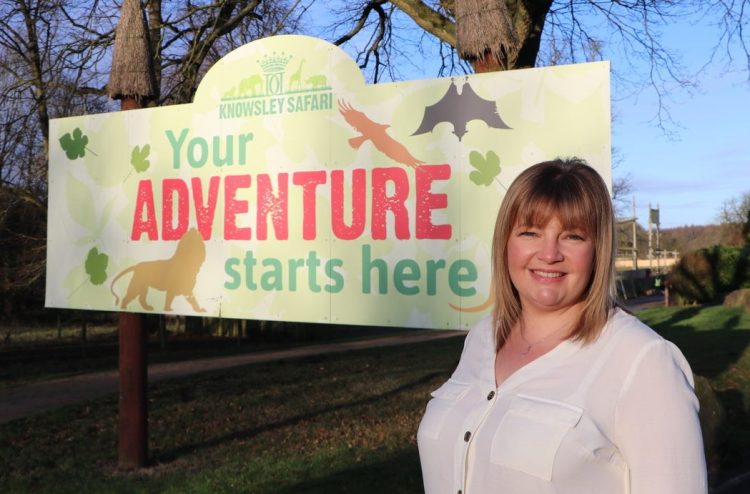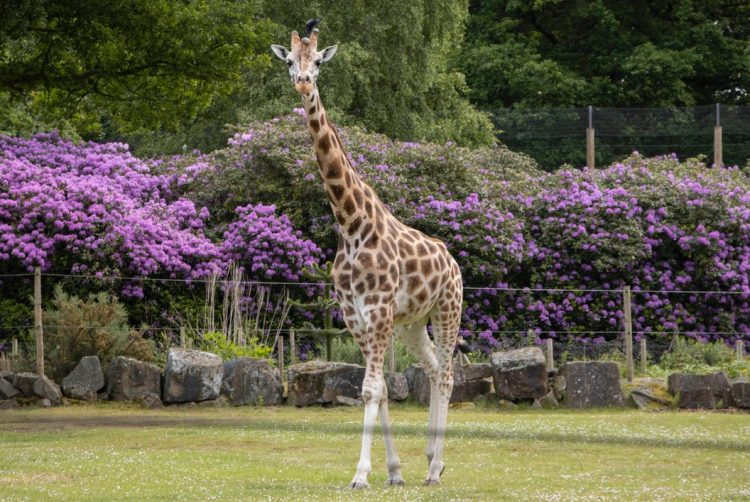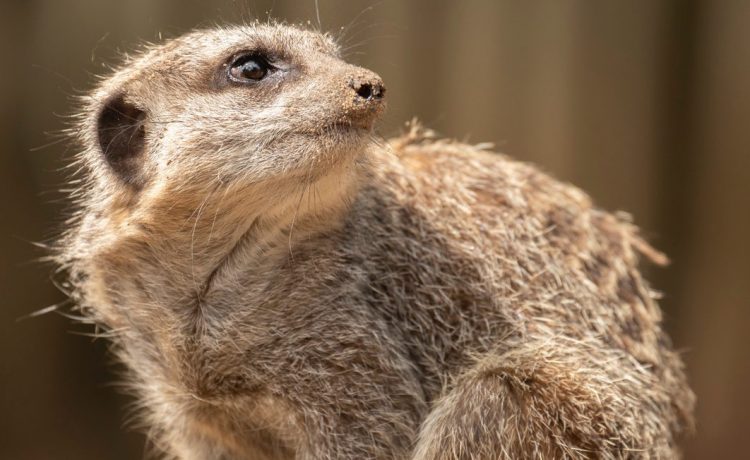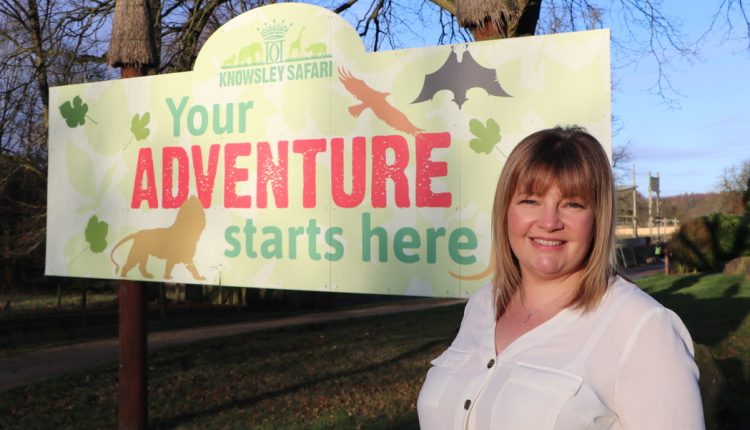In an interview with LBN, Knowsley Safari director Kirsten Warren talks about how the Liverpool city region attraction faced the biggest challenge in its history during the pandemic. Tony McDonough reports

For Kirsten Warren the phrase ‘every day is a school day’ has never been more true than in her current role.
Kirsten is safari director at Lord Derby’s Knowsley Estate. Her role is to run one of Liverpool city region’s best-known and much-loved visitor attractions – Knowsley Safari.
Opened in 1971, the 550-acre park is part of the cultural fabric of Merseyside. It now welcomes almost 700,000 people a year. They flock to marvel at more than 750 animals covering over 80 species. These include lions, baboons, zebras and antelope.
Kirsten arrived at Knowsley Safari from the National Trust. So while she offers extensive expertise and experience in running visitor attractions, she is on a steep learning curve when it comes to managing the hairy and furry residents in the park’s zoological collection.
Even her research for the purposes of this interview threw up new nuggets of information. She explained: “I am learning something new every day. For example I didn’t realise we once had a small petrol station in the park for cars that would often run out of fuel. Cars are more reliable these days so we don’t get many drivers grinding to a halt.”
Running a safari park is an expensive and logistical challenge. Every week the animals at the park munch and chew their way through four tonnes of food pellets and 250kg of meat. In the winter 200 bales of hay a week are required.
In 2020 and 2021 the park faced the biggest challenge in its history when it was forced to close three times due to COVID-19 lockdowns. Kirsten said: “COVID was extremely difficult for us because paying visitors is our main source of income.
“And as someone pointed out to me, you can’t put a rhino on furlough. All the animals had to be cared for and fed even when the park was closed for long periods. That was expensive and we didn’t receive any Government help.
“However, we had fantastic support from our members, many of whom carried on paying their membership subscriptions even though they could not visit. We also raised some money through an animal adoption programme.
“Even when other attractions such as parks and gardens were allowed to reopen, we had to stay closed for longer. It was a really difficult period but I am pleased to say we have bounced back really well.”
When Knowsley Safari reopened after the final lockdown in 2021 the schools were still closed. So there was a rush of parents bringing their children to the attraction.
READ MORE: City region visitor economy roars back in 2022
READ MORE: Royal Albert Dock on sale for £50m
She says safety is paramount at all times because, unlike zoos, the animals are roaming freezing in open spaces maybe and, in some cases, can come right up to vehicles. Stories, both real and apocryphal, are commonplace on Merseyside about close-up encounters with the animals. Everyone knows someone who has had their windscreen wipers stolen by a baboon.
“Some people are really nervous about driving directly through the baboon enclosure for fear of what might happen to their car,” said Kirsten. “To accommodate this we have opened a ‘baboon by-pass’. It allows people to drive nearby and still get a good look at the animals without getting too close.
“At the height of the season we can employ up to 150 people. Among our permanent staff here is a brilliant and expert team of keepers. They work with the animals all of the time.
“They do a lot of training with the animals. So, for example, to bring them in to give them medical treatment they are trained to respond to certain calls. Of course our animals by nature can be unpredictable and that is a big part of the draw for visitors.
“Many tell us that no two visits are ever the same. Some will come twice in one day to see different animals at different times.”
There is a section of the general public that views zoos and safari parks with suspicion and those who are against keeping animals in any kind of captivity. Kirsten acknowledges this but points out that zoos and safari parks around the world now collaborate extensively on conservation programmes.
She explained: “Our industry now plays what has become an essential role in conservation and in informing people about the animal world. This takes place both at a national and international level.
“Yes, we are a visitor attraction and people come along to have a good time. But we also offer a wonderful opportunity for people to immerse themselves in the lives of our animals and learn more about them. We have found this has encouraged people to become more aware of the threats to wildlife around the world.
“In some cases there are species that, were it not for zoos and safari parks, may actually now be extinct because their natural habitats no longer exist. We have one species of deer here, called Père David’s deer, that was on the brink of extinction. It was only thanks to a breeding programme that this animal still exists.
“We participate in multiple Europe-wide breeding programmes which see animals regularly moved between zoos and safari parks to ensure their survival. And we work extensively with universities on research projects.”
This year Knowsley Safari sent researchers and the safari’s vet et out to Mongolia to work with local people on the ground on a breeding programme for wild camels. In Cambodia it is supporting a pilot project that is using thermal drones to track several endangered species including deer and gibbons.
“This is a great programme that is allowing people to track animals from above and also look out for illegal poachers,” said Kirsten. “This technology could be rolled out to protect animals in other parts of the world.”



On a more local level Knowsley Safari has really good connections with the wider Liverpool city region community. It has an active education programme on site that welcomes countless visits from schools.
It also has a charitable arm called the Knowsley Safari Foundation. One of its partnership programmes is Wild & Well. This is a fully-funded drive that has so far worked with more than 900 primary school children to connect them with nature and support their own wellbeing.
Kirsten said: “We have now also launched an adult version of the programme, working with a number of local community groups. This is about inspiring people to be more aware and care for the natural world. It also addresses their own wellness and confidence. The feedback so far has been amazing.”
Similar to many companies and organisations, Knowsley Safari has also embarked on its own environmental and decarbonisation programme. Kirsten explained: “We have done all the usual things you would expect such as cutting out single-use plastic, installing solar panels and using only sustainable palm oil.
“We are also constructing new buildings on the site and we are looking at different ways in which we can maximise their thermal efficiency. One of the big challenges we have is that because we have animals not native to the UK, in some cases they need to be housed in heated buildings.
“We are constantly looking at ways of doing that in a more sustainable way. We are looking at one piece of technology which uses infrared sensors and only switches on heating when it detects the presence of the animal. That may be something we end up using here.
“Now we are past the pandemic, we are really looking forward to the future. This summer we are using brick sculptures throughout the park to highlight some of the endangered species. We also regularly run a ‘baboon bus’ that caters for people who can’t get here by car. That has to be booked in advance.
“We haven’t done a full post-pandemic year yet but annual numbers are already approaching the 700,000 mark. That is double the number of visitors we used to get in the 1990s so that is really positive.”

